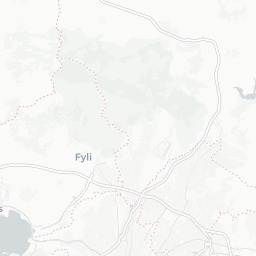






Perachora Excavation 1930-1939: Season 1932
Excavation: Research excavation
The precinct has now been cleared. It appears to have been rectangular, the east wall, the whole length of which can be traced, measuring 25 metres; of the north wall 13 metres are preserved, but the deposit of votives suggests that on this side and on the south (where the Sanctuary is bounded by rock) the length was at least 30 metres. The foundations of the temple lie in the south-eastern part of this area. The deposits near the temple are fairly well stratified in broad chronological series. In the western part of the Temenos, where there are considerable remains of later buildings, the deposits were, as previously, found not to be chronologically stratified. The bronzes found this year include, besides a great number of other small objects, several Geometric horses, a lion and a gorgon like those found in 1930, another lion, a cow and (at some little distance west of the Heraeum) a dove of fine Proto-Corinthian style, dating from about the middle of the seventh century. There are likewise a great number of ivories: as against some twenty circular seals with engraved designs found in the two previous years, over sixty were found this year, together with a large collection of 'spectacle' fibulae, ivory and amber fibulae, pendants, and the like. There are further seven figures of couchant animals more or less closely resembling those from Sparta, and a bone figure of the goddess which has some Laconian parallels. The most remarkable ivory yet found, and one of the finest early ivories ever found in Greece, is a Sphinx nearly three inches high, carved in the round, an early Dedalic work of the first quarter of the seventh century. The only other category of finds which can be mentioned in a brief summary is that of imported objects. These were again extraordinarily plenti- ful: some 500 fayence scarabs, beads and small figures were found, bringing the total for three years to over 750-a number considerably larger than that of all the sites of mainland Greece put together, and all the more surprising since only one scarab has been found in Corinth. After the clearance of the Heraeum area some trenches were cut in the steep slope just above the seashore, due east of the harbour temple. These revealed a wide expanse of pavement made of pebbles set in cement, and in the systematic excavation which followed a Doric Stoa, built of limestone, with pebble-floor, was uncovered. This is the best preserved of the buildings so far found at the Heraeum. It is an L-shaped building, measuring a little over seventeen metres along each of the back walls, with a facade of six Doric columns on each arm (the angle column counted twice). One column drum was still standing in position, and one other was found near the stylobate. The rest have disappeared. The back wall is well preserved at the west end and at the central angle, but has been barbarously rebuilt in the centre of the western arm. The harbour temple (which may perhaps be a temple of Artemis) was further studied, and the foundations which seemed, at the end of the last campaign, to belong to its east front were completely cleared. It is still uncer- tain whether they are part of the building: if they are not, all traces of the east front have disappeared. The statue-base in the central compartment of the west end was raised. Behind and above the Agora lies a field composed of white earth, which seemed for several reasons to be of post-classical formation. A trench was accordingly dug across it. The white earth was found to continue to a depth of some fifteen feet, when a black stratum containing pottery was reached. The architect surveyed the whole area from Lake Eschatiotis to the lighthouse, and planned three of the large ancient cisterns in the fields north- east of the Heraeum valley. The most interesting of these consists of three vertical shafts cut in the rock, and approached from one side by a stairway which runs underground to a depth of over go feet. Trial trenches were also dug on the two acropolis rocks, at Hagios Nikolaos and near the lighthouse, where there are ancient fortification walls. Near the lighthouse a fairly well preserved house with walls dating partly from the archaic, and partly from the Hellenistic, period was found.
Active from 26/03/1932 to 11/06/1932.
[Journal] The Annual of the British School at Athens, no. 32 (1931/1932).

